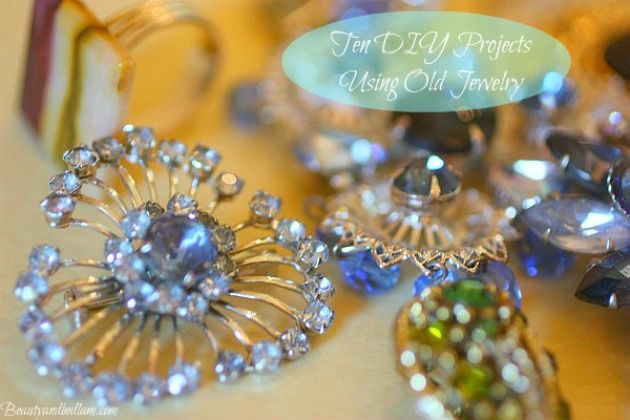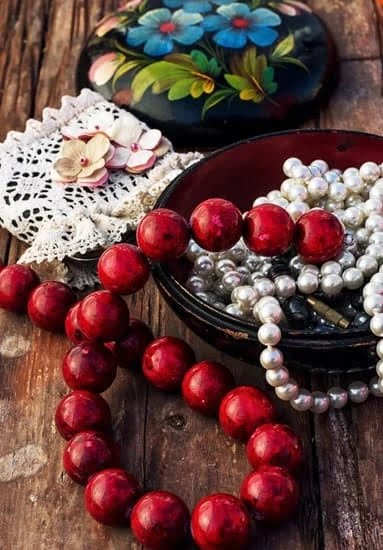Does handmade jewelry qualify as fine jewelry? The distinction between fine jewelry and handmade jewelry is often a topic of debate in the industry. In this article, we will explore the characteristics of both fine and handmade jewelry, analyze their appeal, quality control, market value, perception and prestige in the luxury market, and personal preference to determine whether handmade jewelry can be classified as fine jewelry.
Fine Jewelry is typically known for its use of high-quality materials such as precious metals and gemstones, as well as exquisite craftsmanship that results in pieces of significant value. On the other hand, handmade jewelry is admired for its unique design and artistic expression that sets it apart from mass-produced pieces. How do these different characteristics contribute to each type’s status within the industry?
As we delve deeper into our exploration of both types of jewelry, we will discuss how quality control measures ensure excellence in handmade jewelry production. Furthermore, we will examine how each type holds up in terms of market value and the perception and prestige they carry within the luxury market. Finally, we will consider personal preference and the emotional connection to determine whether or not handcrafted jewelry meets the criteria to be considered fine jewelry.
Characteristics of Fine Jewelry
Fine jewelry is often defined by the materials used, the level of craftsmanship, and the overall value it holds. The use of precious metals such as gold, silver, and platinum, along with gemstones like diamonds, rubies, and sapphires, are common characteristics of fine jewelry. These materials are not only valuable in terms of cost but also in terms of their rarity and durability.
Craftsmanship is another defining feature of fine jewelry. Fine jewelry is often handcrafted by skilled artisans who pay close attention to detail and precision. The intricate designs and elaborate settings found in fine jewelry require a high level of expertise and skill, which adds to its overall value.
The value of fine jewelry goes beyond the cost of materials and craftsmanship. It also encompasses the reputation and history of the brand or designer behind the piece. Fine jewelry is often associated with luxury and prestige, making it highly sought after by those looking for more than just a beautiful accessory.
In considering whether handmade jewelry qualifies as fine jewelry, it’s essential to evaluate how these characteristics align with handmade pieces. Many handmade jewelers use high-quality materials and demonstrate exceptional craftsmanship in their work. However, the market perception and personal preferences may determine whether handmade jewelry can be officially classified as fine jewelry in the traditional sense.
The Appeal of Handmade Jewelry
Handmade jewelry offers a level of creativity and artistry that is often unmatched by mass-produced counterparts. Artisans have the freedom to experiment with different materials, styles, and techniques, resulting in pieces that showcase their distinctive vision and craftsmanship. This emphasis on artistic expression adds an intangible value to handmade jewelry, making each piece a work of art in its own right.
In addition to the artistic value, handmade jewelry also offers a sense of authenticity and connection to the maker. When purchasing a handcrafted piece, customers are not just buying a product – they are investing in the story, skill, and passion of the artisan behind it.
This personal connection adds a layer of meaning and significance to the jewelry, making it more than just an accessory. For many individuals, this emotional connection further solidifies the appeal of handmade jewelry and sets it apart from mass-produced fine jewelry.
| Characteristics | Description |
|---|---|
| Unique Design | Handmade jewelry is known for its one-of-a-kind designs that showcase individual creativity. |
| Artistic Expression | Artisans have the freedom to experiment with materials and techniques, resulting in pieces that reflect their unique vision. |
| Emotional Connection | The personal touch of handmade jewelry creates a meaningful connection between the customer and the artisan. |
Quality Control
Attention to Detail
One of the key aspects of handmade jewelry that sets it apart from mass-produced pieces is the attention to detail. Artisans who create handmade jewelry invest a significant amount of time and effort into each piece, ensuring that every aspect of the design and craftsmanship meets their exacting standards. This level of care and precision results in a higher quality product that truly reflects the skill and artistry of the maker.
Materials Selection
Another critical factor in maintaining excellence in handmade jewelry is the selection of high-quality materials. Artisans often take great care in sourcing gemstones, metals, and other components for their creations, ensuring that only the finest materials are used. This commitment to using top-notch materials not only enhances the overall quality of the jewelry but also contributes to its longevity and durability.
Customization and Adaptation
Handmade jewelry also offers a level of customization and adaptation that is often lacking in mass-produced pieces. Artisans have the flexibility to tailor their designs to meet specific customer preferences, ensuring that each piece is not only expertly crafted but also uniquely suited to its wearer. This ability to customize allows for greater attention to detail and ensures that the finished product meets the highest standards of quality.
Market Value
When it comes to market value, handmade jewelry certainly holds its own against fine jewelry. While fine jewelry is often associated with high-end brands and prestigious materials such as diamonds, gold, and platinum, handmade jewelry offers a unique selling point that appeals to a different segment of the market.
Here are some reasons why handmade jewelry competes well in terms of market value:
- Unique Design: Handmade jewelry pieces are one-of-a-kind, making them highly sought after by collectors and individuals who appreciate artisanal craftsmanship.
- Artistic Expression: Handmade jewelry allows for creativity and personal expression, which can attract buyers looking for something more personalized and meaningful.
- Social Responsibility: Many consumers are drawn to the ethical and sustainable practices often associated with handmade jewelry, adding value beyond the material worth.
Despite the perceived exclusivity of fine jewelry, there is a growing appreciation for the artistry and individuality found in handmade pieces. The market value of handmade jewelry is not solely determined by the cost of materials or brand name recognition but also by the story behind each piece and the skill that goes into creating it. As such, in many cases, handmade jewelry can hold its own against traditional fine jewelry in terms of market value.
Perception and Prestige
When it comes to the luxury market, handmade jewelry has often been perceived as a niche product, separate from traditional fine jewelry. However, in recent years, there has been a shift in perception as consumers and industry experts alike have come to recognize the unique value that handmade jewelry brings to the table.
One of the reasons why handmade jewelry is starting to gain prestige in the luxury market is its emphasis on craftsmanship and individuality. Each piece of handmade jewelry is meticulously crafted by skilled artisans, resulting in one-of-a-kind designs that cannot be replicated by mass-produced items. This level of artisanship and attention to detail adds an undeniable allure to handmade jewelry, making it desirable for those seeking something truly unique.
Moreover, the luxury market is beginning to acknowledge the value of supporting independent artisans and small businesses. Handmade jewelry often comes with a story, a connection to the maker, and a sense of authenticity that resonates with consumers who are looking for more than just material possessions. As conscious consumerism continues to shape buying habits, handmade jewelry stands out as a meaningful and sustainable choice.
Personal Preference
When it comes to jewelry, personal preference plays a significant role in the decision-making process. Handmade jewelry often holds a special place in the hearts of those who appreciate the time and effort that goes into creating each piece. The emotional connection to handmade jewelry is rooted in the knowledge that it was crafted with care and attention to detail, making it unique and one-of-a-kind. This raises the question: does handmade jewelry qualify as fine jewelry?
Many people argue that handmade jewelry should indeed be considered fine jewelry because of the craftsmanship and dedication that goes into producing each piece. The personal touch of a skilled artisan can elevate a piece of jewelry to something truly extraordinary. Furthermore, the sentimental value of handmade jewelry often surpasses that of mass-produced pieces, adding an extra layer of meaning and significance.
According to a survey conducted by Art Business News, 65% of respondents indicated that they would consider purchasing handmade jewelry over mass-produced options because they appreciate the individuality and heart that goes into each handcrafted piece. This suggests that for many consumers, the emotional connection to handmade jewelry holds just as much value as the materials used or the prestige associated with traditional fine jewelry.
| Aspect | Data |
|---|---|
| Sentimental Value | High for Handmade Jewelry due to personal touch |
| Consumer Preference | 65% would consider purchasing handmade over mass-produced |
Conclusion
In conclusion, the debate on whether handmade jewelry qualifies as fine jewelry is not a clear-cut one. While fine jewelry is typically associated with materials like gold, diamonds, and other precious gemstones, and is known for its high craftsmanship and market value, handmade jewelry brings its own unique appeal to the table. The artistic expression, unique design, and personal touch of handmade pieces often hold great emotional value for both the creator and the wearer.
When it comes to quality control, it is important to note that not all handmade jewelry meets the same standards. However, in recent years, there has been an increasing emphasis on ensuring excellence in craftsmanship and materials within the world of handmade jewelry. Many artisan jewelers are dedicated to honing their skills and using only the highest quality materials to create their pieces.
Ultimately, whether or not handmade jewelry qualifies as fine jewelry may depend on individual perception and personal preference. While traditional notions of luxury may still favor mass-produced fine jewelry, there is a growing appreciation for the artistry and individuality found in handmade pieces.
It seems that a new level of prestige may be emerging for these unique creations within the luxury market. As consumers continue to seek out meaningful connections and authentic expressions of style, handmade jewelry may very well hold its own against traditional fine jewelry in terms of both market value and personal significance.
Frequently Asked Questions
What Qualifies as Fine Jewelry?
Fine jewelry is typically made with high-quality materials such as precious metals like gold, platinum, or silver, and often includes gemstones like diamonds, rubies, sapphires, and emeralds. It is usually crafted with exceptional attention to detail and design.
What Is Handmade Jewelry Called?
Handmade jewelry is often referred to as artisan jewelry or artisanal jewelry. This type of jewelry is crafted entirely by hand, with the artisan using traditional tools and techniques to create unique pieces that may not be perfectly uniform but have a distinct personal touch.
How Can You Tell if Jewelry Is Fine?
There are several ways to determine if jewelry is fine. One way is to look for markings or stamps on the piece that indicate the purity of the metal used (e.g., 18K for 18 karat gold).
Another indicator is the quality of the gemstones – fine jewelry often features high-quality, natural gemstones with vibrant color and clarity. Additionally, fine jewelry tends to have precise and intricate craftsmanship evident in its design and construction.

Welcome to my jewelry blog! My name is Sarah and I am the owner of this blog.
I love making jewelry and sharing my creations with others.
So whether you’re someone who loves wearing jewelry yourself or simply enjoys learning about it, be sure to check out my blog for insightful posts on everything related to this exciting topic!





